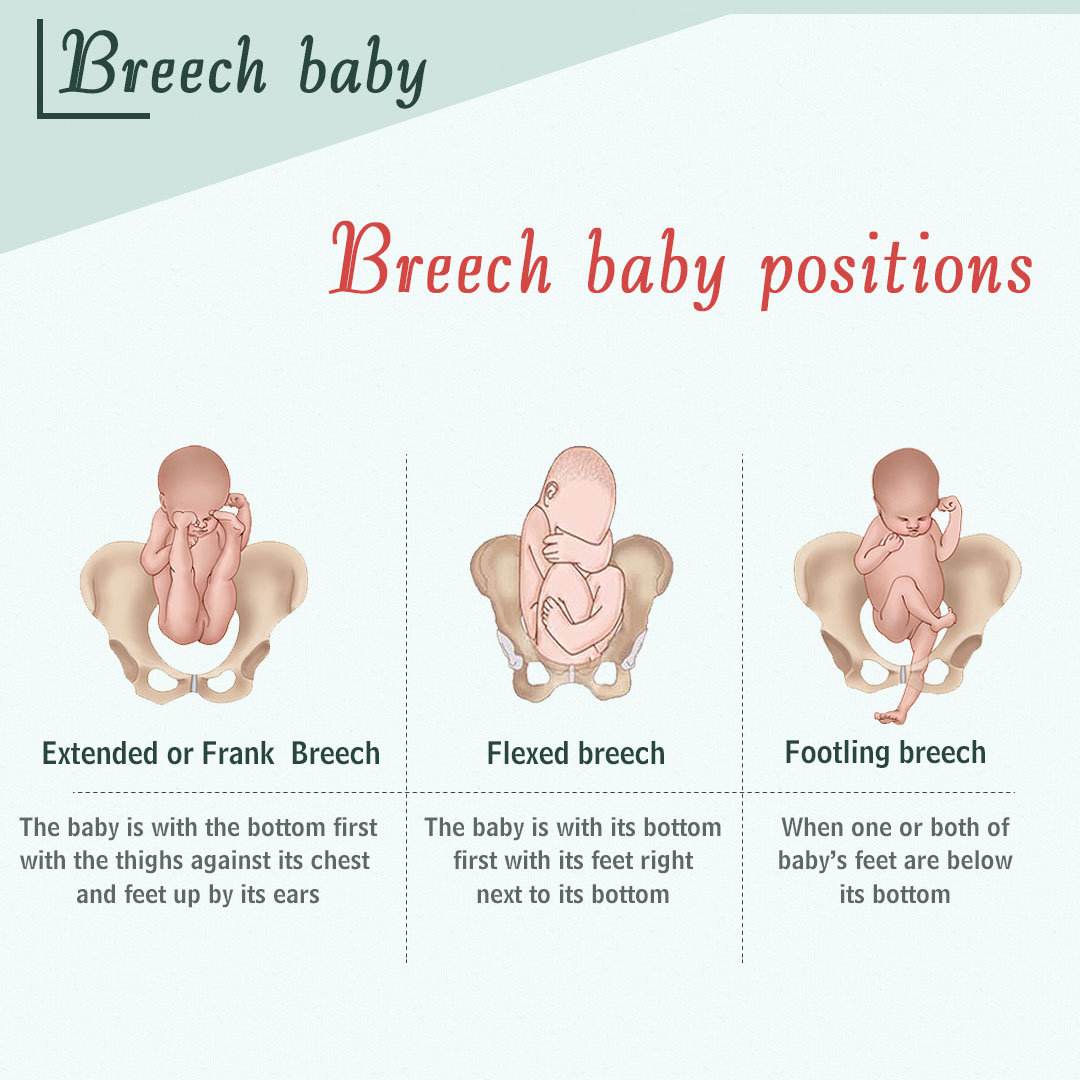Breech Baby and External Cephalic Version
What is a breech baby?
Babies lying bottom first or feet first in the uterus (womb) instead of in the usual head first position are called breech babies. At term only 3 to 4 out of 10 babies are in breech position. Most babies will move into delivery position a few weeks prior to birth, with the head moving closer to the birth canal. When this fails to happen, the baby’s buttocks and/or feet will be positioned to be delivered first. This is
referred to as “breech presentation.”
Why does breech position happen?
In most cases it is only a matter of chance that a baby does not turn and remains in the breech (bottom down) position. In a few situations, certain factors make it difficult for a baby to turn during pregnancy. These might include the amount of fluid in the womb (either too much or too little), the position of the placenta or the presence of more than one baby. Most breech babies are born healthy.
Babies can be in different breech positions depending on their legs and feet. These are –
- Extended or Frank Breech- the baby is with the bottom first with the thighs against its chest and feet up by its ears.
- Flexed breech –the baby is with its bottom first with its feet right next to its bottom
- Footling breech – when one or both of baby’s feet are below its bottom
EXTERNAL CEPHALIC VERSION (ECV)
It is a medical technique of turning the baby from breech position. If there is a case of a breech presentation, you can try to turn the baby. ECV is non-surgical method of turning a breech baby in the uterus, usually performed after 36 or 37 weeks of pregnancy. However, it can be performed right up until you are in early labour. You should discuss all the options with your obstetrician and follow their recommendations. It is a safe and also a successful procedure and I have personally done it with many patients in my professional career.
During the procedure, your doctor will give you medicine to help your uterus relax. Before the ECV you will have a bedside ultrasound to check baby’s heart beat and position and after the ECV it will be done again to check if the baby has turned with head down position. The success rate is around 40% to 50% and also depends on the skills of your obstetrician.
ECV can be uncomfortable and painful at times. Your obstetrician will stop if you are experiencing pain. The procedure usually last for few minutes. Foetal heart is monitored for an hour after procedure and you will be advised to go home with a follow up plan. If your blood type is Rhesus D negative- you will be advised to take anti D injection.
But if you don’t want to try ECV, or if you try it but it doesn’t work, then the options are a caesarean section or a vaginal birth. Research has shown that planned caesarean section is safer for your baby than a vaginal breech.
A breech vaginal birth might be possible, depending on your individual circumstances, the type of breech position your baby is in, and the skills of the doctors.







